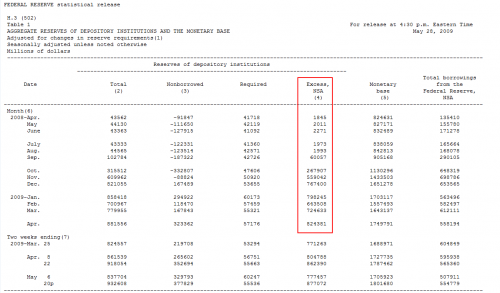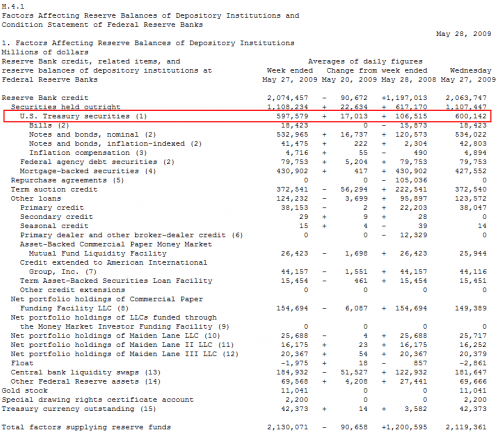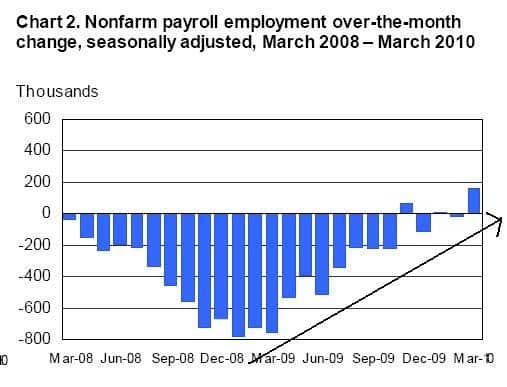Bringing back the Scylla and Charybdis flation meme
In June of last year, I wrote a post called "Central banks will face a Scylla and Charybdis flation challenge for years." The crux of the piece was that we are living in a world in which debt deflation is always one downturn away, but in which massive amounts of stimulus and liquidity are driving economic policy. To my mind, this creates flation whiplash. In June I posed it this way:
The problem is this: we have just witnessed one of the most serious asset bubbles in history. In fact, I would call the great housing bubble an ‘echo bubble’ that was merely a continuation of the bubble forces that created the technology bubble of the late 1990s. So, the world saw asset price inflation of the most severe kind for over a decade… What results from the implosion of such a significant bubble is deflation.
Actually, more crisply put, what results is ‘the D-process,’ an outcome highlighted by Ray Dalio of Bridgewater Associates (see my post “A conversation with Bridgewater Associates’ Ray Dalio” for more detail). This process involves the three D’s of deleveraging, deflation and depression (outlined in my post “We are in depression“).
Richard Koo goes further in his book “The Holy Grail of Macro Economics.” Here, he argues that the unwind of great bubbles suffers from what he labels a ‘balance sheet recession.’ In essence, … the psychology of debt reduction will limit the effectiveness of monetary policy as a policy tool.
In my view, the catalyst for this change of psychology is the ‘debt revulsion’ that ushers in the panic phase of an asset bubble collapse… In fact, I would argue that companies learned their lesson about debt from the aftermath of the tech bubble. It is the household sector in the U.S. (and the U.K.) which is heavily indebted. Therefore, if the psychology of a balance sheet recession does take form, it will be the household sector leading the charge.
In sum, the psychology after a major bubble is very different than the psychology before its collapse. The post-bubble emphasis becomes debt reduction and savings, making monetary policy ineffective, not because financial institutions are unwilling lenders but because companies and individuals are unwilling borrowers. These are forces to be reckoned with for some to come.
Inflationary forces
Meanwhile, inflation is going to be a problem too. Why? Two principle reasons come to mind: commodity prices and money supply…
…The Federal Reserve and other central banks have been pumping a lot of money into the financial system in an attempt to add reserves to the system and to take on the intermediation role the wider banking system normally serves. Nevertheless, this money is not being lent out and excess reserves are piling up at the Federal Reserve…
But, what happens when the economy returns to an environment in which those excess reserves start to be lent out? Inflation. And this is an inflation that will not be so easy to control because the Federal Reserve has embarked on a policy of ‘qualitative easing’ by buying up non-treasury assets, transforming its balance sheet from one dominated by treasury assets to one in which Treasury assets are in the minority. So, as the Fed has intervened and bloated its balance sheet, an increasing amount of the assets it has with which to withdraw the excess liquidity in the system is hard to sell.
So, you have a huge amount of excess reserves, hard to sell assets on the Fed’s balance sheet. Add in the fact that the Federal Reserve is going to be loathe to choke off an incipient recovery and you have the makings of inflation when recovery takes hold.
Moreover, there is a rise in commodity prices which is adding inflation to the pipeline. Much of the recent decrease in headline inflation numbers is due to the collapse in commodity prices.
That was then. Right now, much of the increase in inflation is due to commodity prices. And the economy is clearly in recovery mode. Witness recent comments by Robert Hall who has a hand in calling the recession date. He says it is “pretty clear” the recession is over. The recent data from the services and manufacturing PMI say so too. Employment is still pretty murky in my view, not nearly as robust as the headline number. But this graph from FiveThirtyEight tells you we are trending better than one year ago.
So, with consumers in a more buoyant mood, is it only a matter of time until credit growth begins? That’s a question, not a statement – as I still give a double dip even odds. But, a lot of people see galloping inflation on the horizon. And then what will the Fed sell to soak up liquidity? CDOs from Maiden Lane III? The U.S. ten–year yield is way up today – surpassing 4.00% at one point. And TIPS (Treasury inflation-protected securities) are in hot demand. Oil is at $85 a barrel. Gold is rising now too. Unless we do get a double dip, what’s to stop this from continuing onward and upward?
I still see it the way I did in June:
There are two outcomes I am looking for.
Outcome Number One
- No policy traction. This is a sluggish muddle-through Japanese scenario where the Richard Koo thesis of the balance sheet recession comes into play. You would see an output gap and below-trend growth for an extended period. Most pundits would say it is the lack of lending that is creating the problem. However, what if it is the lack of borrowing which is at fault? Then, we are going to see no traction from monetary policy.
Outcome Number Two
- Start-Stop economy. I believe Bernanke would prefer this outcome. This is one in which the Federal Reserve allows the economy to recover by keeping interest rates low. The result is a rise in inflation. We could see inflation rising to 3 percent inflation and then to 5 to 7 and 10 percent. An example would be animal spirits coming back in 2010. And leading to 3 percent inflation followed by 7 percent including $100 oil and then interest rate hikes and another recession at which point the deleveraging begins again in earnest. Followed by more easing and on it goes. But, of course, the problem with outcome two is it is unstable and that it invites an aggressive policy response which risks situation one as an ultimate outcome.
Neither of these scenarios is one in which asset markets are likely to benefit, one reason I see the latest uptick in share prices as nothing more than a bear market rally.
Can you give me a goldilocks scenario that doesn’t fall into these camps?



“What results from the implosion of such a significant bubble is deflation.” – I beg to differ entirely. This “fear of deflation” is largely nonsensical. Deflation does not keep people from spending – they always spend what’s necessary. And money NOT “spent” is then saved which means it is credit to someone who invests it for capital goods etc. thus it is again being spent, only not for consumption. Money never lies completely idle to any extent whether there’s inflation, deflation, stability or a solar eclipse. For deflation to seriously happen, not only the current extreme credit expansion by the central banks and states (through “quantitative easing”, stimulus packages, monetising and then spending national debt etc.) but also the money that was released into the economy PRIOR to the collapse would have to be “mopped up” again. This is nowhere to be seen nor would it be technically possible (confiscation aside) so we will rather see inflation than deflation.
Is that why we see tons of inflation and high rates in Japan? I think not.
We cannot make categorical statements that inflation will prevail. Empirical
evidence does not support it.
This is a circular argument – as long as inflation is to mean rising prices it lends itself to different arguments than when one uses it in its original meaning – increase in money supply (Latin “inflare” – to blow up). By that measure, Japan has inflated. If prices have not risen across the board that needs to be analysed in a second step. For that, one needs to ascertain on what that money has been spent (or if it as yet been spent) – a lot e.g. went into carry trades. However, if prices fall due to the law of supply and demand that is no excuse to further inflate the money supply only because one has a rigid idea of how price tags should look like. Where is the economic theory that stipulates “just” prices?
It’s not circular. This is what people care about. While I may think inflating the monetary base or asset and commodity prices is relevant (https://pro.creditwritedowns.com/2008/06/what-is-inflation.html), what most people care about is consumer price inflation.
The fed is paying interest on reserves. At any time it can raise this rate to above market prices, and squash lending like a little bug.
I know you know MMT from Mosler and the rest. Additionally, your insights and writing are some of the best on the net.
But in this case, you’re crazy if you think that Bernanke doesn’t understand the power of paying interest on reserves. This is probably the only thing he really understands about money, but at least it is something.
We are not on the verge of facing inflation from this channel. We may be facing push inflation from peak oil and gold.
I agree with this and noticed that the “F” word (i.e. FISCAL policy) was
barely mentioned in the entire post. That seems to me to be the more
germane factor in terms of what happens to the economy going forward.
In a message dated 4/5/2010 6:11:19 P.M. Mountain Daylight Time,
writes:
======
My assumption is that fiscal policy will be in a deep freeze. The Obama Administration is done with using fiscal policy as a tool for stimulus.
If you are right Ed, (and it seems like your’s is a reasonable assumption), then a 1937 scenario awaits us. Confidence is rising because things have stopped getting worse- sort of a second derivative change.In the shuffle the ‘stock market’ is now composed of companies who can do reasonably well in the current environment.Car companies have re scaled to make profits at lower unit volumes, for example. Not as much as they would have made at higher unit volumes, but they’ve figured out how to stop losing and make a bit. Personal income has stopped falling, leveled off, and now moving up a bit, largely due to higher govt. deficits.So that provides a ‘floor’ of sorts.Government fiscal stimulus has got to the point where for the given amount of spending tax collections are low enough so the net deficit spending is adding enough income and ‘monetary savings’ to support current levels.So what’s the problem ahead? Domestically in the US, it looks like we’ve taken care of the systemic meltdown risk because the government has in effect backstopped everything (“no more Lehmans”), but the very success of calming things down increases the risk of govt tightening fiscal policy- higher taxes and/or less spending- which they are planning on doing. But it hasn’t happened quite yet..at least not in the US.Outside risks are the euro zone melting down which could be any day. Friday’s announcement that they aren’t going to do anything for Greece because Greece doesn’t need any help was not constructive for a ‘solution’ other than Greek insolvency. And voters in Germany, for example, don’t want their government to help them at all- they believe it’s just throwing good money after bad to a population of ‘spongers.’ So there seems to be no political support for anything less than letting them go insolvent. It’s incredible how policy makers internationally haven’t learned their lesson and that it’s business as usual. As soon as a recovery seems to be taking hold, they try to deflate the economy, in the hope that someone somewhere in the world will be sustaining demand at home.
Marshall, I am looking at a 1937-style double dip as even odds given policy normalization (and not just on the fiscal side too).
“So, with consumers in a more buoyant mood, is it only a matter of time until credit growth begins? That’s a question, not a statement – as I still give a double dip even odds.”
The question is what would happen if we don’t get a double dip. Scenario one is muddle through in a Japan-like malaise. Scenario Two is the preferred Bernanke scenario, moderately high inflation via commodity prices and other cyclical agents. Those are the two outcomes I profiled.
I see debt deflation and balance sheet repair as secular issues that mean consumer price inflation isn’t likely to become embedded anytime soon. However, it can become a cyclical issue which forces the Fed’s hand, pushing up mortgage rates and creating a problem for recovery.
Ed,
Thanks for a great piece. I think “no policy traction” just leads to deflation: if we don’t build momentum, the economy is likely to backslide. The experience in many countries is that “start stop” just leads to accelerating inflation. I think the choice between the two (assuming that robust, organic growth is not an option) is largely a political one. The question is, what do the people fear the most following a financial crisis? Politicians merely react to this fear and, almost by default, invite in the opposite dynamic. In Latin America during the 80’s, the people most feared austerity, and they got inflation (classic start-stop). Later in the nineties, they most feared inflation, and with the IMF’s help, they ultimately got austerity.
What do we fear the most today? No question about it. Austerity. No one wants to see their living standards decline, and since we maintain living standards through leverage and asset appreciation, the government is simply reacting to this basic fact by fighting austerity tooth and nail. Of course, that doesn’t absolve our political leaders — it merely places their actions in a broader context.
The comment on Interest on Reserves deserves a response. This is really a well-prepared red herring served up by the Fed. The IOR affects short term interest rates; MBS sales affect long term interest rates. Whether the Fed uses one tool or the other, rates are going up somewhere along the curve. The real question is whether there is a risk of higher rates — l.t. or s.t. — tipping us into deflation. As long as the answer is yes, then our political leaders will not allow higher rates.
With all due respect to the MMT contingent, I think they make going-in assumptions about inflation expectations that virtually eliminate tail risk. That is, if I assume house prices never go down, there is no tail risk in no-doc subprime mortgages. If I assume inflation expectations never go up, there is no tail risk to monetizing fiscal deficits.
David, thanks for the thoughts. When it comes to the inflation-deflation debate, I had been firmly on the deflation side of things in the past. However, the Japanese situation – a disinflationary/moderately deflationary outcome – has convinced me that 1933 is not the only outcome when debt levels are too high.
A lot of the inflation-deflation debate is couched as an either/or proposition: it’s either 1933 style debt deflation or Weimar/ Zimbabwe style hyperinflation. That delineation is pretty stark.
My two outcomes are predicated on the notion that policy makers will fight extreme events tooth and nail because of prior episodes of stagflation and deflation. So I am assuming that the Fed will be forced to raise rates if the CPI is 6% and the economy is growing. I am assuming that the government will use fiscal stimulus if we get a double dip. These could be false assumptions, but that’s why the two scenarios I presented are less stark than something out of Argentina or Brazil. I hope that makes sense.